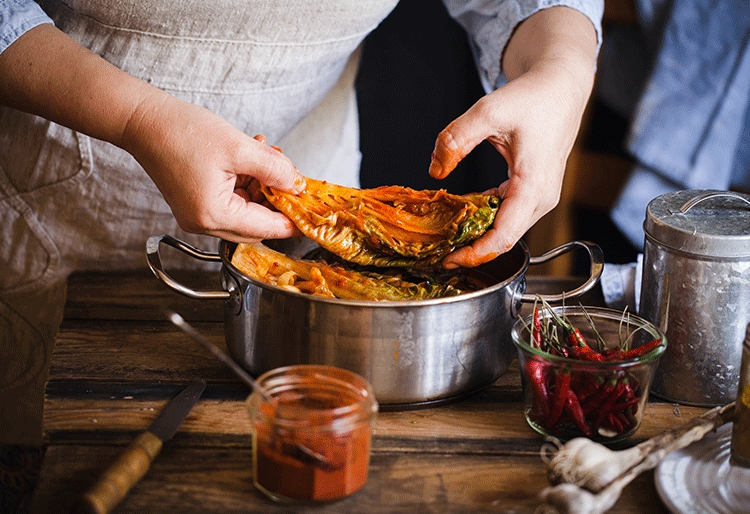Kimchi Recipe: what it is and how to make it
Discover what kimchi is and how to make this Korean dish. We tell you how to cook this recipe simply and its properties.
on today's menu
Share

Not long ago, kombucha tea was added to the list of fermented foods and put the spotlight back onto the health benefits of consuming this type of foods which are rich in probiotics. Now, kimchi renews this list of foods headed by the classics of yoghurt, cheese and bread, as well as those we have been adopting from other more exotic cooking such as kefir, tempeh, sauerkraut, miso or the aforementioned kombucha tea.
Origin
It is a traditional Korean dish based on fermented Chinese cabbage. Its origin, as we know it today, dates back more than 250 years, but in reality there are historic documents that show they ate fermented vegetables with salt in Korea more than 3000 years ago. The need arose to be able to preserve the vegetables in the colder months of this country situated in north-east Asia, where, for climatological reasons, from November to March they weren’t able to grow any type of vegetables.
How to make it
They say there are as may types of kimchi as there are homes in Korea, since the base is the same: Chinese cabbage and salt to release the water and, recently red chilli, but then the sauce it is fermented with can include ginger, fruits, nuts,...and even seafood such as anchovies, oysters, prawns, even octopus or squid, depending on the geographical area of the country and the typical foods of that area.
To help to keep it fresh, green seaweed or turnip can be added. In the areas where there is no access to seafood, it is usually replaced with a meat stock.
Korean kimchi recipe

Ingredients:
- 2 Chinese cabbages (around 1300g each)
- 6 carrots
- 600G of daikon or turnip
- ½ cup of salt
- 8 cloves of garlic
- ½ cup of chopped spring onion stems or Chinese chives
- 30g of skinless ginger
- 1 tablespoon of brown sugar or honey
- 2 tablespoons of rice boiled in 400ml of water until it is soft (keep the boiled water)
- ¼ cup of fish or squid sauce, soy sauce or shrimp powder (or you can mix several together)
- Between 1 and 4 tablespoons of gochugaru (Korean chilli flakes)
Method
1. Firstly, remove the outer broken leaves of the cabbage, if there are any, and cut them into 4 pieces lengthways and afterwards into 2 or 3 cm chunks.
2. Next, wash the cabbage in cold water, drain it and mix it with salt. Next, wait half an hour and repeat the process 3 times (you can add weight on top to facilitate the process).
3. Meanwhile, cut the turnip and carrot into sticks.
4. Once the time is up, wash the cabbage for a while under the tap to remove the salt and drain with a colander, pressing on it to help to drain the excess water.
5. With a blender, mix the garlic, ginger, sugar, fish sauce, soy sauce or prawn powder, rice and gochugaru to taste.
6. Mix the cabbage, vegetables and sauce firmly with your hands until it is all well mixed. We recommend using latex gloves, since the spiced mix is strong and may irritate the skin.
7. When everything is infused, distribute the mix into one or several glass jars or airtight containers, pushing it down so that everything is covered in the liquid. Leave at room temperature until it ferments. When it starts to bubble, you can wait another day so it becomes stronger or put it in the fridge.






